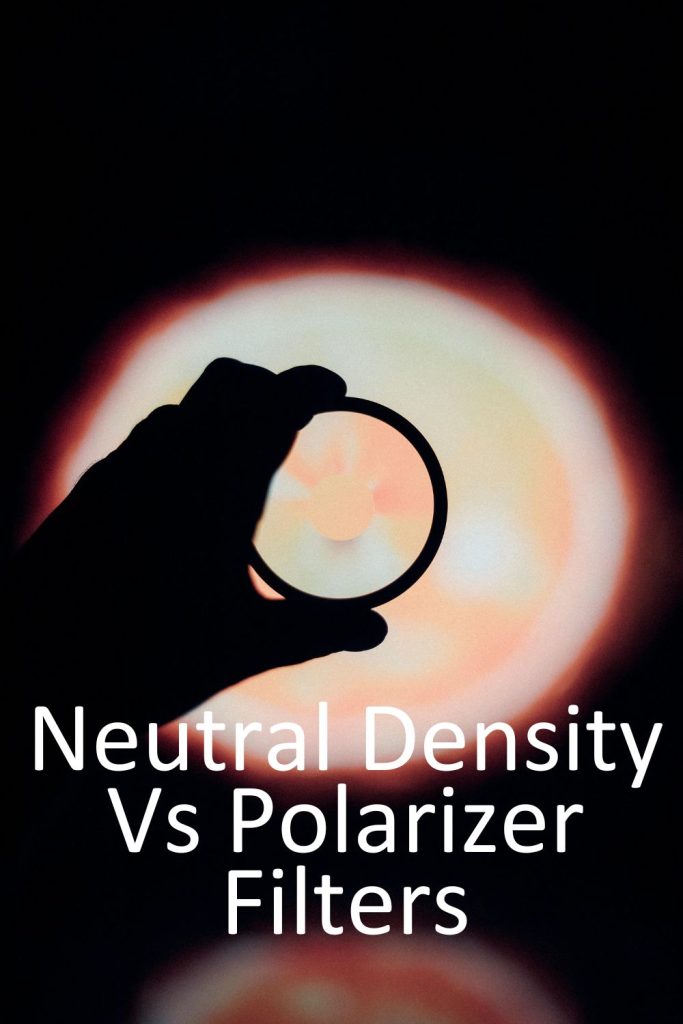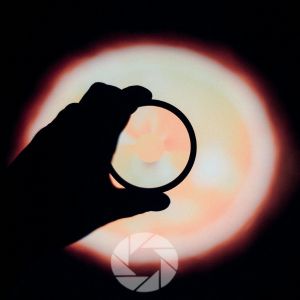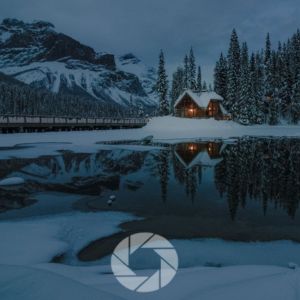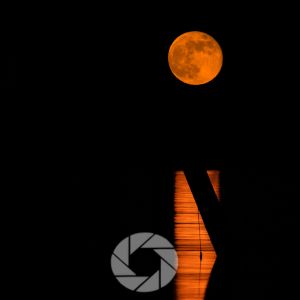
One of the most common questions I hear from beginner landscape photographers is: “Do I need an ND filter or a polarizer and what’s the difference?”
The world of filters can feel overwhelming at first. UV filters, ND filters, polarizers, variable versions, exposure charts. Truly, it’s a lot to take in. But the truth is, understanding ND filters vs polarizers doesn’t have to be complicated.
In this post, I’ll break it down simply: what each filter does, when to use them, how they differ, and why they matter for creating stronger, more intentional images.
By the end, you’ll know not only which filter to reach for in any situation, but also how filters help you connect more deeply with the mood of a scene from silky waterfalls to crystal-clear skies.
I receive commissions from links in this post, thank you for your support
ND Filters Vs Polarizers
Neutral Density Filter Photography
At its simplest, a neutral density (ND) filter is like putting sunglasses on your lens. It reduces the amount of light entering your camera without changing the colors of the scene. This allows you to use slower shutter speeds or wider apertures even in bright conditions.
ND filters are essential for long exposure photography. Think of:
- Waterfalls transformed into silky ribbons.
- Clouds streaking across the sky in dramatic motion.
- Crowds of people blurred into ghostly traces.
In essence, ND filters give you control over time. They allow you to show the world in ways the human eye doesn’t usually see.
ND filters smooth, soften, and reveal the flowing nature of landscapes. They’re especially powerful in summer when sunlight is harsh, yet you want dreamy, flowing effects.



ND Filters Explained
There are different strengths of ND filters, each described in “stops” (how many times the light is halved). Common versions include:
- 3-stop (ND8): Great for subtle motion blur in waterfalls or streams.
- 6-stop (ND64): Ideal for longer exposures in moderate light.
- 10-stop (ND1000): A favorite for dramatic long exposures in daylight for creating surreal, ethereal images.
The higher the stop value, the darker the filter, and the longer your exposure can be.
An ND filter is about control. It doesn’t change your composition, it changes the relationship between light and time, teaching patience and presence.
Discover Your Next Journey – These Tours are designed for people who connect with light and landscape.
Polarizers Explained
A circular polarizer (CPL) is another vital filter for landscape photographers, but it works differently. Instead of reducing light broadly, it selectively blocks reflected light.
What does that mean in practice?

- It makes blue skies richer and clouds more defined.
- It cuts glare from water, wet rocks, or leaves, letting you see through reflections.
- It reduces haze, adding clarity to distant mountains.
- It boosts fall colors making them richer
Polarizers rotate, and as you turn them, you’ll notice the effect increase or decrease depending on the angle of the sun. They’re most effective when the sun is 90° to your subject.
Polarizers clarify, cut through haze, and reveal the crisp atmosphere of a place. They’re invaluable in autumn when skies are vivid and in spring when haze often lingers.
ND Filters vs Polarizers for Beginners
If you’re just starting out, I recommend beginning with a polarizer. It’s more versatile in day-to-day landscapes and gives immediate results: richer skies, clearer water, less glare.
Once you’re ready to explore long exposures, add a 6-stop or 10-stop ND filter. This will open the door to creative motion blur and surreal effects that take your images to the next level.
Remember: filters aren’t about adding gimmicks. They’re about revealing what the land already holds: reflections beneath water, the passage of time in clouds, the true spirit of light itself.
ND Filters vs Polarizers: Quick Comparison
| Feature | ND Filter | Polarizer |
|---|---|---|
| Function | Reduces overall light | Reduces reflections, deepens skies |
| Best For | Long exposures, creative motion blur | Clear skies, cutting glare, haze removal |
| Strengths | Control over time | Control over clarity |
| Weaknesses | Requires tripod/long exposures | Less effective at midday/low angles |
| Can Use Together? | Yes; stack for maximum effect | Yes; with ND |
ND Filter Calculator
One challenge with ND filters is figuring out exposure times. This is where an ND filter calculator comes in handy.
- If your base shutter speed without a filter is 1/125 sec…
- Adding a 6-stop ND filter extends it to 1/2 sec.
- Adding a 10-stop ND filter extends it to 8 sec.
You can use smartphone apps or printable ND filter charts to make this easier in the field. A quick laminated card in your bag can save you a lot of guesswork when light is fading.
Variable ND Filter vs Fixed
Another common question is whether to buy a variable ND filter or a set of fixed filters.
- Variable ND filters rotate to change density (like sunglasses with an adjustable tint). They’re convenient, especially for travel or video work.
- Fixed ND filters have one set strength. They tend to produce more consistent image quality and fewer optical issues (like cross patterns).
For still landscape photography, I prefer fixed filters for reliability. But if you’re just starting out and want versatility, a variable ND can be a great first step.
ND Filter Chart
Here’s a simple ND filter chart for quick reference:
This chart makes it easy to visualize how each filter expands your creative options.
| ND Strength | Stops of Light | Typical Use Case | Example Shutter Speed (from 1/125 sec) |
|---|---|---|---|
| ND8 | 3 stops | Mild motion blur in waterfalls/streams | 1/15 sec |
| ND64 | 6 stops | Longer exposures in daylight | 1/2 sec |
| ND1000 | 10 stops | Surreal long exposures, dramatic skies | 8 sec |
When to Use ND Filter vs Polarizer
So how do you decide? Here are some scenarios:

Waterfalls and rivers: ND filter to blur motion; polarizer to cut glare and reveal rocks beneath.
Blue skies and clouds: Polarizer to deepen contrast; ND only if you want slow cloud movement.
Sunset over the ocean: ND filter for long exposures of waves; polarizer to reduce glare on wet sand.
Forests after rain: Polarizer to remove shine from wet leaves; ND if you want silky mist rising.
Often, the best answer is both together. Stacking a polarizer and ND filter gives you rich skies, reduced reflections, and the ability to extend exposure time.
Foggy Example: Filters and Atmosphere
To tie this to mood, imagine photographing a foggy forest. A polarizer can reduce reflections on wet foliage, deepening greens and adding contrast. An ND filter lets you extend your shutter speed, turning drifting fog into soft, moving layers. Together, they transform a quiet woodland into something ethereal; an image that feels like stepping into another world.
This is the magic of filters: they don’t impose something artificial. They reveal what’s already there, aligning with the Earth’s spirit.
Seasonal & Elemental Perspectives
Filters are also seasonal tools:
- Summer: ND filters tame harsh sun on waterfalls and rivers.
- Autumn: Polarizers bring out crisp skies and rich leaf colors.
- Winter: ND filters balance bright snow light; polarizers cut glare.
- Spring: Polarizers reduce haze and glare on budding greens.
Through the four elements:
- Earth: ND filters grounding brightness.
- Air: Polarizers clearing haze.
- Fire: ND filters taming fiery sunsets with long exposures.
- Water: Polarizers revealing reflections, ND filters smoothing flows.
ND Filter vs UV Filter
Beginners often confuse ND filters with UV filters. Here’s the difference:
- UV filters are clear and primarily designed to block ultraviolet light (important for film photography). Today, most photographers use them as protective glass. They don’t noticeably affect exposure or color.
- ND filters actively reduce light to enable long exposures or wider apertures.
So while a UV filter protects your lens, an ND filter expands your creative possibilities. They’re not interchangeable.
Conclusion
ND filters vs polarizers: which one is right for you? The answer depends on what story you want to tell. ND filters help you stretch time, capturing motion in a way that feels dreamlike.
Polarizers help you cut through glare and haze, revealing clarity and depth. Together, they give you the tools to photograph not just landscapes, but the moods and mysteries within them.
If you’re a beginner, start simple. Add a polarizer to your kit, then experiment with ND filters as you grow.
📸Learn for free!
➡️ FREE Wallpapers and Guides
➡️ DISCOUNTS on future Tours & Tutorials
➡️ TIPS for improving Your photography

I don’t share your Info with anyone. You can unsubscribe at anytime.
- ND Filters Vs Polarizers
- Neutral Density Filter Photography
- ND Filters Explained
- Polarizers Explained
- ND Filters vs Polarizers for Beginners
- ND Filters vs Polarizers: Quick Comparison
- ND Filter Calculator
- Variable ND Filter vs Fixed
- ND Filter Chart
- When to Use ND Filter vs Polarizer
- Foggy Example: Filters and Atmosphere
- Seasonal & Elemental Perspectives
- ND Filter vs UV Filter
- Conclusion
- 📸Learn for free!






